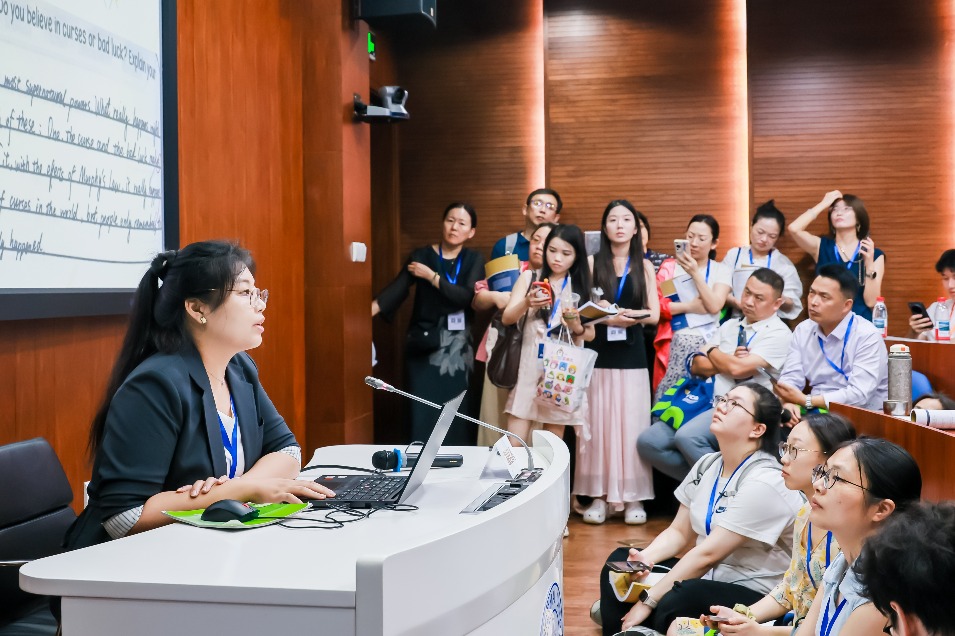Art form's beauty speaks for itself
Narration and singing deliver a compelling tale of heritage, Yang Feiyue reports in Chengdu.

The moment Wu Yun opened her mouth, her narrative-enhanced singing in crisp Sichuan dialect cut through the air at a small teahouse in the provincial capital Chengdu.
Under a soft spotlight, each of her facial expressions was magnified, revealing rich sentiments that ran from composure, doubt to elation. Her voice rose and fell, complemented by a background music from the Chinese hammered dulcimer yangqin, walking a roomful of ardent viewers through plots of a local legend and tugging at their heartstrings.
A cultural worker from the Guang'an district cultural center in Sichuan, she delivered the graduation performance after a 30-day training stint along with dozens of other students from different cultural and art fields.
With dramatic expressiveness, they weaved tales such as Romance of the Three Kingdoms, Dream of the Red Chamber, and local folktales and brought to life the soul of Sichuan Yangqin, a traditional narrative musical art form that was named a national intangible cultural heritage in 2008.
Deriving its name from the primary accompanying instrument, Sichuan Yangqin's early acts typically involved a solo performer who sang and narrated while playing the instrument. The style emphasized spoken storytelling over singing, with relatively simple melodic structures. Performers also used a clapper to punctuate speech.
Historical accounts suggest that Yangqin performances with musical accompaniment have been present in the province since the Qing Dynasty (1644-1911).
Performers both speak and sing, often accompanied by musical instruments. When a piece contains more characters than performers, it is common for one actor to take on multiple roles, skillfully switching voices and gestures to distinguish between them.
Wu, in her 30s, only encountered Sichuan Yangqin for the first time in 2023.
"At first, I thought Sichuan Yangqin only referred to the hammered dulcimer," she recalls with a laugh.
"I figured learning an instrument would be a good addition. Only when I arrived in Chengdu did I realize Sichuan Yangqin is actually a narrative singing art form accompanied by the yangqin."
Her introduction came through a national initiative to cultivate talent in intangible cultural heritage, or ICH.
In 2015, the Ministry of Culture and Tourism launched the training and capacity-building program for intangible cultural heritage practitioners to enhance ICH transmission and further integrate it into modern life.
The initiative coordinates selected educational institutions to organize and carry out training programs focused on traditional craftsmanship and related ICH projects.
Wu opted for the 30-day training program by the Sichuan Vocational College of Art, which joined the initiative in 2018.
"It was intense but enriching — filled with daily sessions on musical accompaniment, rhythm techniques, and vocal styling," Wu recalls.
"Sichuan Yangqin features subtle vocal turns and endings that simply can't be written down in sheet music. You can only learn by imitating the teacher," she adds.
She says she was most impressed by the instructors' tailored teaching.
"I'm a woman performing a male vocal role, so the teacher adjusted the pitch and added more vocal ornamentation to suit my voice," she explains.
Wu Xia, a provincial representative inheritor of Sichuan Yangqin and instructor of the intensive training, noticed the monthlong program brought together participants from across Sichuan, including cultural center staff, schoolteachers, grassroots performers and professional actors.
While most had some musical background, few had prior exposure to Sichuan Yangqin.
"Despite the tight schedule, everyone gave their all. They memorized long sections of lyrics. Even though the final performance still had some rough edges, the results were genuinely impressive," Wu Xia notes.
She says a focus was placed on imparting both the technical fundamentals and spiritual essence of the art form to participating students.
"Accompaniment techniques, vocal styles and musical framework — these are foundational elements every learner must first grasp. But beyond the basics, it's crucial to reinterpret and innovate with a contemporary lens, allowing this centuries-old art form to connect with the present day," she explains.
At the same time, she introduced original works she composed, encouraging students to explore new expressive possibilities during rehearsals.
She believes each student can carry Sichuan Yangqin into their respective communities and professions.
Professional actors can bring new repertoire to their troupes, teachers can integrate the art into school activities, and cultural workers can organize performances to widen public exposure, she says.
She also remarked that this has been the most comprehensive and time-intensive teaching experience of her career.
"In the past, city-level workshops were often limited to just three days, which allowed only for brief introductions. To truly teach students how to sing, perform and create, we need structured, in-depth training like this," she says.
According to Long Fujun, dean of the continuing education school with the Sichuan Vocational College of Art, 10 such high-level, practice-driven training sessions have been organized, cultivating more than 250 emerging ICH bearers with both artistic skills and innovative thinking. The hallmark of the training approach is an integrated model of creative practice, academic research and multidimensional teaching, Long points out.
The college has fully utilized its distinguished artist masters and their influences to build hands-on platforms for ICH transmission. Instructors include renowned national-level ICH inheritors who teach core repertoires in person, while emphasis is placed on integrating traditional aesthetics with contemporary ideas.
"The goal is to enable students to deeply grasp both the artistic essence and the living vitality of these heritage forms," she says.
Long recalls that when she first took on the training project in 2018, she was aware not only of the national significance but also the complexities involved.
"We had to select the right projects, recruit expert instructors, structure impactful curricula, and deliver measurable outcomes," she says, adding that it truly felt like "crossing the river by feeling the stones".
Over the past years, her team traveled across Sichuan to conduct field studies, consult with master artists, and continually refine the curriculum based on real-world needs.
As the college gained increasing experiences through sustained involvement in ICH training, it has channeled research outcomes back into teaching to enrich the training program's academic depth, Long says.
During the training, a core traditional repertoire serves as the central thread of the curriculum, complemented by technique instruction, historical theory, performance skills, rehearsal, and research methodology.
"This holistic structure fosters growth in performance, knowledge, and applied practice," Long says.
In terms of talent selection, priority is given to candidates with solid foundations, strong commitment to cultural transmission, and growth potential — particularly those from the native regions of specific ICH traditions — to ensure contextual relevance.
Long deems the ultimate goal of the training program is to make ICH bearers cultural bridges connecting traditional technique and innovation and modern communication, empower youth as cultural decoders through the use of digital platforms, creative media, and design, and activate shared cultural ecosystems where returning graduates integrate their learning into local tourism, education, and revitalization projects.
She hopes young people will come to see ICH as "a cultural streetwear brand that flows in our veins" and a millennia-old original Chinese craft with enduring aesthetic value.
As a public cultural service provider, Wu Yun says she intends to continue refining her vocal skills and deepening her understanding of the tradition, while working on innovation.
"Innovation must be grounded in tradition," Wu Yun emphasizes.
She believes that one must first understand the structure and aesthetics of traditional performances before attempting to modernize them.
"Today's performances are condensed into 9-minute segments. The pace is quicker, the story starts immediately — there's no room for the lengthy buildup found in classic works," she notes.
She sees this streamlining as necessary to match contemporary audiences' attention spans and aesthetic preferences — a natural step in the evolution of folk arts.

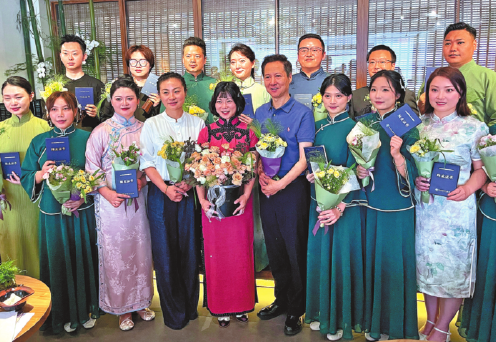
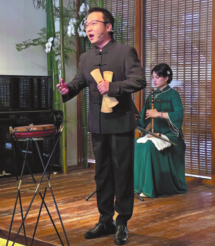
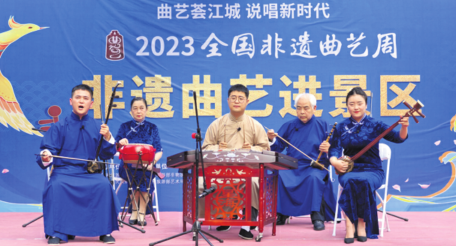
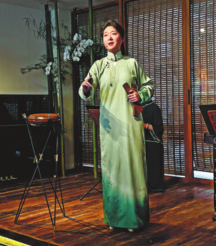
Today's Top News
- UK asylum hotel protests spread to multiple cities
- Derailed German train 'probably hit landslide'
- Xi urges all-out efforts to safeguard people's lives amid floods
- China to offer nationwide childcare subsidies
- Low-altitude economy ready for takeoff
- US, EU seal trade deal amid concerns over tariff imbalance






















